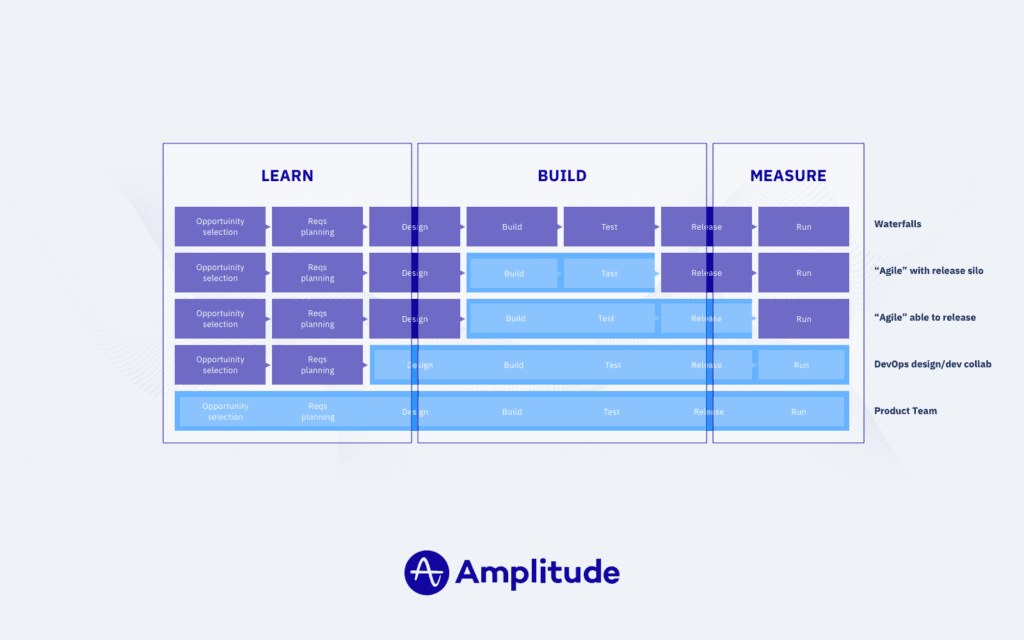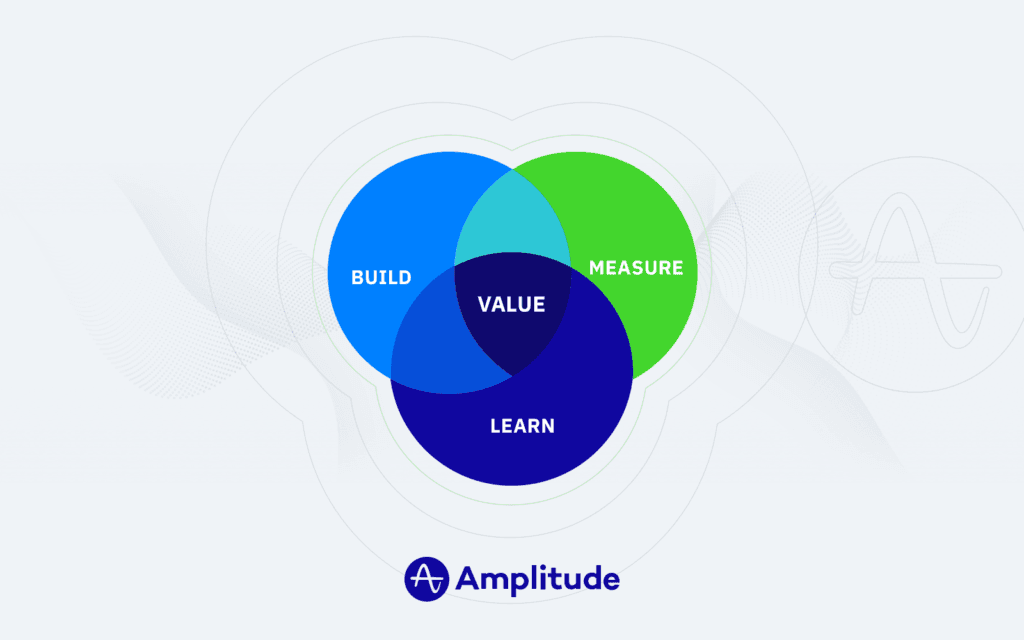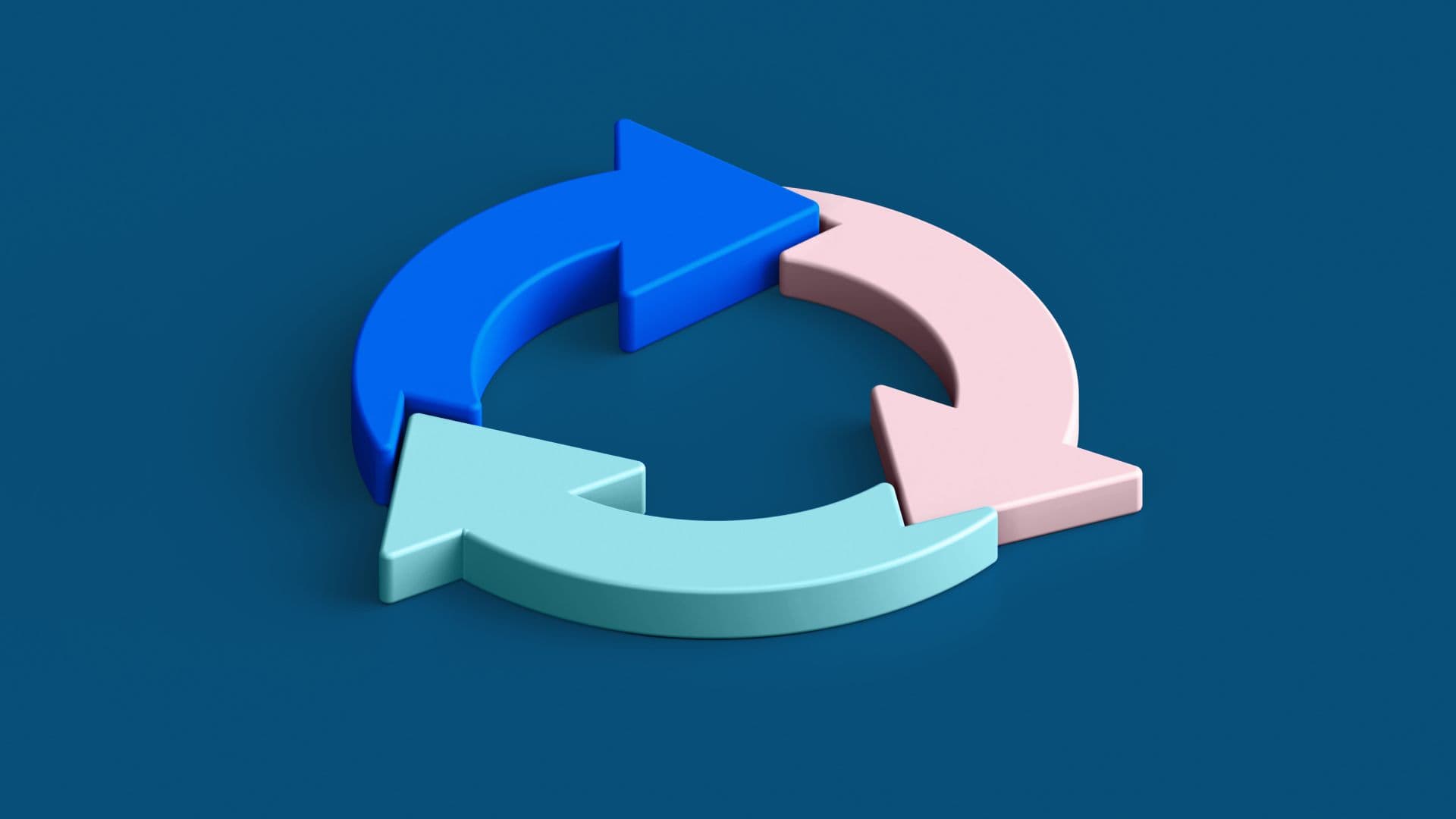Build, Measure, Learn: the Product Management Lifecycle Loop
The build-measure-learn loop is at the core of the Lean methodology. Learn how to use this framework to create continual value for customers and your team at every point of the product management lifecycle.
Originally published on November 13, 2020
Browse by category
Build. Measure. Learn.
Each of these concepts is core to the way product managers and teams categorize their work. Teams flow in and out of these concepts throughout the product development lifecycle—each expanding on the last to help create value for your customer.
Each step of this build-measure-learn loop helps your team deliver continual value to customers faster, without sacrificing quality or adding complexity to your process.
But the name is misleading—to use the build-measure-learn loop successfully, your team needs to think of it as:
Learn. Build. Measure.
When you understand how to apply this framework to the product management lifecycle, it not only helps your team stay connected with specific customer needs and outcomes, but it also helps them iterate faster and create more engaging product experiences. This makes it easier to build a more consistent product experience for customers and helps keep your team on track.
Flowing through the build-measure-learn loop fosters engaged relationships with your customers and stronger connections with your team.
Learn What Your Market and Customers Need
Before you build or measure your product, it’s important to learn as much as possible about your target users and your market. That’s why planning is the first stage of the product management lifecycle. Creating a solid plan based on customer insights makes moving through the development process as efficient and seamless as possible.
Just take a look at the following diagram of the various steps in the product development process as they move through different stages of cross-functional collaboration. We break it down based on types of team structure.

The Learn step spans opportunity selection, requirements and planning, and the beginning of product design. At this point in the cycle, your goal is to identify and validate an existing problem in the market and document how you intend to solve it.
Each stage in the Learn phase is based on customer insights:
- Opportunity selection: The type of product you want to build based on your customers’ needs
- Requirements and planning: how do you intend to address these customers’ needs and get work done efficiently?
- Design: What customers want your product to look like upon release
If you don’t understand what customers need, it’s impossible to build the right kind of product or feature to solve their problem.
This is why it’s so important to dig into your behavioral customer and marketing data to inform your future state product decisions.
The more information you have on hand, the easier it is to make the right decision for your users and for your product to deliver.
It’s so imperative to be able to connect your customers’ needs or problems with a specific business outcome or goal – whatever product or feature you create has to be valuable for both customers and your business. And understanding that value is only possible when you have a clear outcome in mind for the product. So, identify the critical metrics, like lifetime value (LTV) or revenue churn, that you want to impact with your release, and clearly tie these metrics to the overall health of your business.
Once you’ve defined the problem and started thinking of a way for your team to resolve it, it’s time to move on to the next stage of the loop—building.
Build Your Product to Solve a Problem
The Build step of the build-measure-learn product management lifecycle loop is the point where your team actively works through the development and testing tasks required to create your new product or feature. All the research and planning done in the Learn step helps to make this development process as seamless as possible.
The build-measure-learn loop is an offshoot of the Lean method, a product development framework focused on eliminating wasted time and resources for your team. That’s why the Build step focuses on creating a minimum viable product (MVP). This is a product or feature that contains only the bare necessities a customer needs to see value from your release.
It’s important to note that “viable” is the most important part of that statement. Everything you release needs to add value for customers; otherwise, it’s not viable—which is why some people call MVP the minimum “valuable” product, as well.
Focusing on an MVP helps your team deliver something of value to users faster and gives you a real-world product or feature to test and measure. Instead of spending your time guessing how customers will react, you’ll release a product or feature to market with the intention of iterating on its value over time.

The feedback you receive from an MVP informs how you’ll handle product development going forward. Learning and measuring don’t stop at this stage of the build-measure-learn loop—the Build process gives your team a window into how internal processes can be improved in future iterations.
With the build-measure-learn loop, your goal is to spend as little time as possible building your new product or feature, as there will always be adjustments in the future, not just to your product but to your assumptions and expectations of value as well. Each iteration of your product after release provides additional context on how to deliver continual value to customers. The build-measure-learn loop just shortens the time between feedback and release. Basically, it helps your team learn by doing.
That’s what makes the next step of the loop so powerful—without an understanding of how you’re doing, it’s impossible to learn how to improve.
Measure the Impact of Every Release
The Measure step of the build-measure-learn loop is all about analysis and critical thinking. At this point in the product management lifecycle, your team has created an MVP and is ready to release it. The goal moving forward is to invite user feedback and see how well your new product or feature delivers on its intended value.
Start by analyzing the business goals and metrics you defined during the Learn step. This gives you the opportunity to highlight wins and identify potential areas for improvement. The wins will show you what worked. Whether it’s an internal process your team followed or a specific piece of qualitative feedback from a user, you’ll be able to track direct improvements to your original goals.
Let’s say you’ve just launched an MVP of your new analytics dashboard tool. If that release boosts engagement in the target customer segment outlined in your product development plan, that validates your idea and builds momentum for the next iteration.
Identifying areas of opportunity is where the real fun begins. When you find something that didn’t work out as you intended, that’s the point where the build-measure-learn loop kicks off again. You take the feedback received upon release and cross-check it against existing or new customer data. Not only does this help you pinpoint specific improvements you can make to your MVP, but it also highlights where your product planning and strategy need more work.
As you measure the impact of your release, talk to customers to get their perspectives as well. These conversations are a great source of qualitative feedback that you can use to connect with the customer on a deeper, more empathetic level. It shows that your team is invested in the product and making it as valuable as possible while at the same time fostering more engaged relationships across the board.
If our hypothetical analytics dashboard tool only displayed three of the five most popular metrics your customers wanted to see, determining which metric to include next would be a great next step. This knowledge would come from both user feedback and your existing customer data.
That’s part of what makes the build-measure-learn loop so powerful—it forces your team to consistently assess how they create value with each release.

Another way to validate your ideas is by running split tests as you make changes to inform your ongoing analysis. Making small improvements to your new product or feature is easier to do when you have a solid framework for experimenting with changes.
When you combine testing and experimentation with a product intelligence tool like Amplitude, it helps your team see how their work contributes to the success of each new iteration. Just make sure you document every step along the way. It’s easier to trace the impact of each change when you have clear metrics and analytics that show how the product has changed over time.
The Build-Measure-Learn Loop Makes Product Iteration Easy
The build-measure-learn loop gives product teams a solid framework for thinking about how they move through the product management lifecycle. Each step helps you add value faster and make changes to processes without causing unnecessary confusion for your team.
Learn more about how to provide continual value to customers with each release through Amplitude’s guide to product analytics best practices.

Nikhil Gangaraju
Director, Product Marketing, Amplitude
Nikhil is a product marketer at Amplitude focusing on Amplitude Analytics and works with teams to advance our mission to help companies build better products.
More from Nikhil




